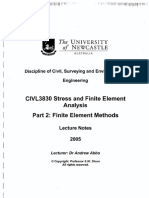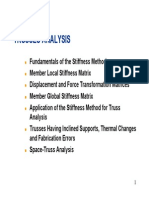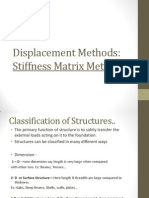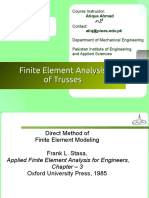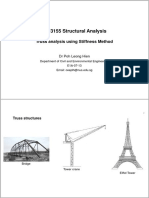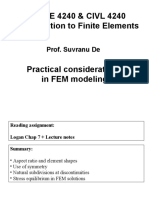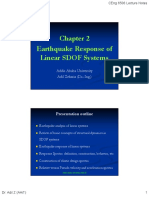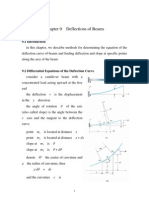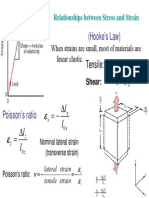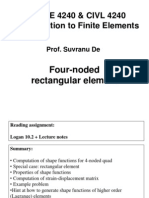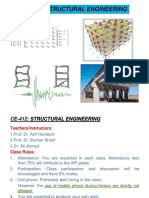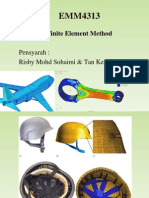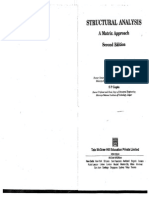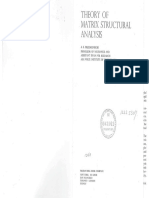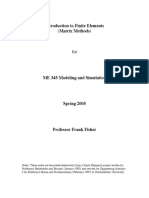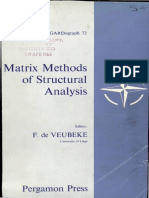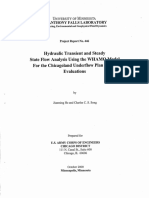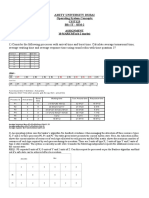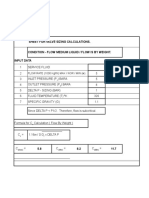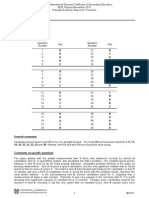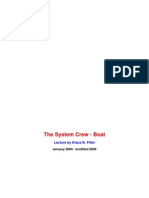100% found this document useful (1 vote)
295 views38 pagesMatrix Methods
The document discusses the historical development of matrix methods for structural analysis. It notes that in the 1940s-1950s, structural engineers confronted highly indeterminate structural systems like swept-wing aircraft that required matrix algebra to analyze. The document then covers how matrix methods are well-suited for use with digital computers and were developed based on energy principles and the finite element method. It provides examples of deriving the element stiffness matrix for a truss element based on the basic equations of equilibrium, compatibility, and stress-strain relationships.
Uploaded by
kshitjCopyright
© © All Rights Reserved
We take content rights seriously. If you suspect this is your content, claim it here.
Available Formats
Download as PDF, TXT or read online on Scribd
100% found this document useful (1 vote)
295 views38 pagesMatrix Methods
The document discusses the historical development of matrix methods for structural analysis. It notes that in the 1940s-1950s, structural engineers confronted highly indeterminate structural systems like swept-wing aircraft that required matrix algebra to analyze. The document then covers how matrix methods are well-suited for use with digital computers and were developed based on energy principles and the finite element method. It provides examples of deriving the element stiffness matrix for a truss element based on the basic equations of equilibrium, compatibility, and stress-strain relationships.
Uploaded by
kshitjCopyright
© © All Rights Reserved
We take content rights seriously. If you suspect this is your content, claim it here.
Available Formats
Download as PDF, TXT or read online on Scribd
/ 38


